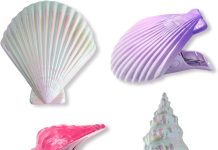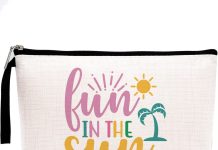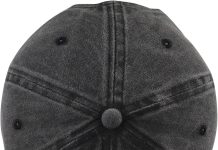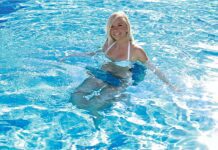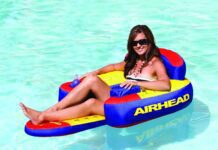We are excited to share with you an exhilarating journey into the world of surfing! In this article, we will explore an array of surfboards that cater to both professional surfers and enthusiastic beginners. Whether you are a seasoned pro looking to push your limits or someone who is just starting out and has caught the surfing bug, we have got you covered. Get ready to ride the waves with style and grace as we bring you the best surfboards designed to elevate your surfing experience.
Different Types of Surfboards
Surfing is a thrilling water sport that has captured the hearts of people all around the world. Whether you’re a professional surfer seeking the perfect board to ride massive waves or a beginner just dipping your toes into the exciting world of surfing, choosing the right surfboard is crucial. The variety of surfboard types available can be overwhelming for both pros and beginners. To help you navigate through the options, we’ve compiled a comprehensive guide to the different types of surfboards, factors to consider, and essential accessories. So, let’s dive in and explore the world of surfboards!
Shortboards
Shortboards are the go-to choice for experienced surfers who crave high-performance and agility on the waves. These boards are typically between 5’5″ and 7’0″ in length and have a narrow, sleek design. Shortboards are known for their maneuverability and responsiveness, making them ideal for executing fast turns, tricks, and aerial maneuvers. However, they require a high level of skill and control to ride effectively, so they are not recommended for beginners.
Longboards
On the other end of the spectrum, we have longboards. These surfboards are typically over 9’0″ in length and offer stability and ease of use, making them perfect for beginners. Longboards are known for their traditional and classic style, reminiscent of the early days of surfing. They provide a smooth and relaxed surfing experience, allowing surfers to catch smaller waves with ease and ride them gracefully.
Fish Boards
Fish boards have a distinctive shape that sets them apart from other surfboards. With a wide nose and a swallowtail, these boards excel in small to medium-sized waves. The design of fish boards allows for increased speed and maneuverability, making them a popular choice for surfers who want to have fun and carve up the waves. They are suitable for intermediate to advanced surfers.
Funboards
As the name suggests, funboards are all about enjoyment and versatility. They bridge the gap between longboards and shortboards, offering a more balanced surfing experience. Funboards are typically between 6’6″ and 8’0″ in length and are designed to provide stability and easy paddling while still allowing for some maneuverability on the waves. They are great for beginners looking to progress their skills or more experienced surfers wanting to enjoy a versatile surfing session.
Foam Boards
Foam boards, also known as soft top boards, are perfect for beginners who are just starting their surfing journey. Made with a soft foam deck and reinforced core, these boards provide excellent stability and safety, reducing the risk of injuries while learning to surf. Foam boards are lightweight and buoyant, making them easy to paddle and catch small waves. They are a great choice for both kids and adults who are new to the sport.
Surfboards for Professionals
For professional surfers, finding the right surfboard is essential to perform at the highest level and take on the most challenging waves. Whether it’s riding massive waves or executing intricate maneuvers, professional surfboards are designed to meet the demands of elite surfers. Here are some of the surfboard types preferred by professionals:
High-Performance Shortboards
High-performance shortboards are the top choice for professional surfers aiming to showcase their skills on the waves. These surfboards are built for speed, precision, and response. With their narrow profile and aggressive rocker, high-performance shortboards excel in powerful waves and allow surfers to execute critical maneuvers with precision. Board dimensions are often tailored to the individual surfer’s preferences and skill level.
Step-Up Boards
When the waves start to reach epic proportions, professional surfers turn to step-up boards. These specialized surfboards are designed to handle big surf conditions, offering exceptional control, stability, and paddle power. With a longer and narrower outline, step-up boards allow surfers to tackle larger waves with confidence and precision. These boards are typically used when the wave size exceeds a surfer’s regular shortboard capabilities.
Gun Boards
Gun boards are specifically crafted to conquer massive waves, often seen in powerful reef breaks or when surfing on big wave spots. These surfboards are longer, narrower, and feature a more drawn-out nose, enabling surfers to paddle into and ride colossal waves with precision and control. Gun boards are the ultimate tool for experienced surfers seeking adrenaline-pumping experiences in the most challenging surf conditions.
Tow Boards
Tow boards are a specialized type of surfboard used in tow-in surfing, where surfers are towed into massive waves by personal watercraft to reach unridable swells. These surfboards are shorter and wider than traditional surfboards, providing stability and control in extreme conditions. Tow boards are designed to handle high speeds and allow surfers to navigate the most critical sections of the wave, showcasing their skills in some of the most extreme surf spots around the world.
Big Wave Boards
Big wave boards are designed specifically for riding enormous waves that can reach heights of 30 feet or more. These surfboards are longer, thicker, and wider with a highly specialized design to handle the sheer power and force of these massive waves. Big wave boards offer maximum stability, control, and flotation, allowing professional surfers to charge down the face of huge waves and experience the rush of riding giants.
Factors to Consider for Professional Surfboards
Whether you’re a professional surfer or aspire to be one, there are several factors to consider when selecting a surfboard that suits your skill level, wave conditions, and personal preferences. Here are some key factors to keep in mind when choosing a professional surfboard:
Skill Level
Your skill level plays a vital role in determining the type of surfboard that best suits you. Professional surfboards are designed for experienced surfers who have developed advanced skills and control on the waves. If you’re a beginner or intermediate surfer, it’s essential to progress gradually and master the fundamentals before transitioning to a high-performance board.
Wave Conditions
The type of waves you plan to surf is another crucial consideration. Different surfboards are designed to excel in specific wave conditions. High-performance shortboards, for example, are ideal for powerful and steep waves, while step-up boards and gun boards are necessary for tackling larger and more challenging waves. Understanding the characteristics of the waves you’ll be riding will help you select the appropriate surfboard for the conditions.
Board Dimensions
Surfboard dimensions, including length, width, and thickness, are essential factors to consider for professional surfboards. These dimensions determine the performance attributes of the board, such as stability, maneuverability, and paddling speed. Longer boards provide more stability and paddle power, while shorter boards offer agility and responsiveness. The dimensions of the board should align with your skill level and the wave conditions you’ll be riding.
Materials
The materials used in constructing a surfboard can greatly impact its performance and durability. Professional surfboards are typically made from high-quality materials, such as foam cores with reinforced fiberglass or carbon fiber coatings. These materials provide strength, flexibility, and responsiveness, allowing surfers to push the limits of their performance on the waves. It’s important to choose a surfboard with materials that suit your needs and style of surfing.
Tail Shape
The tail shape of a surfboard influences its maneuverability, speed, and control. There are various tail shapes to choose from, including squash tails, round tails, swallowtails, and more. Each tail shape offers different benefits and performance characteristics. For professional surfers, tail shape selection depends on their style, wave conditions, and personal preference.
Surfboards for Beginners
If you’re a beginner surfer, selecting the right surfboard is crucial to foster a positive learning experience and build a solid foundation. Beginner surfboards prioritize stability, buoyancy, and ease of use, allowing new surfers to gain confidence and progress their skills gradually. Here are some surfboard types recommended for beginners:
Soft Top Boards
Soft top boards, also known as foam boards, are an excellent choice for beginners. These surfboards are designed with a soft foam deck and a durable core, ensuring maximum stability and safety for new surfers. Soft top boards are forgiving and reduce the risk of injuries while learning to balance and catch waves. They are buoyant, lightweight, and more affordable than other surfboard types, making them a popular choice for beginners of all ages.
Longboards
Longboards are another great option for beginners as they offer a stable platform for learning the fundamentals of surfing. These surfboards are typically longer, wider, and thicker than other board types, providing enhanced stability and paddle power. Longboards are easy to paddle and allow beginners to catch waves with ease. They also offer a smooth and relaxed surfing experience, allowing beginners to gain confidence and learn basic maneuvers.
Mini Malibu Boards
Mini Malibu boards, also known as funboards or mini longboards, are a hybrid between longboards and shortboards. These surfboards provide stability and buoyancy, making them suitable for beginners who want to progress beyond a traditional longboard. Mini Malibu boards offer a balance between stability and maneuverability, allowing beginners to catch waves easily while still having the capability to perform basic turns and maneuvers.
Funboards
Funboards, as their name suggests, are designed to provide maximum fun for surfers of all skill levels. These surfboards bridge the gap between longboards and shortboards, offering a versatile and enjoyable surfing experience. Funboards are typically between 6’6″ and 8’0″ in length and provide a good balance of stability, paddling ease, and maneuverability. They are a popular choice for beginners who want a board they can progress on and enjoy in a variety of wave conditions.
Foam Boards
For absolute beginners, foam boards are an excellent choice to build confidence and develop the basic skills of surfing. These boards are lightweight, buoyant, and highly stable, making them easy to paddle and catch small waves. Foam boards are also forgiving, reducing the risk of injuries while learning to balance and maneuver on the waves. They provide a safe and enjoyable introduction to the world of surfing.
Factors to Consider for Beginner Surfboards
Choosing the right surfboard as a beginner involves considering specific factors that prioritize stability, ease of use, and progression. Here are some factors to consider when selecting a surfboard as a beginner:
Stability
Stability should be the primary focus when selecting a surfboard as a beginner. A stable board will provide a solid platform for learning to balance, catch waves, and paddle effectively. Look for surfboards with wider outlines, greater width, and increased thickness to ensure maximum stability, especially for those first rides.
Size and Volume
The size and volume of a surfboard play a crucial role in providing stability and buoyancy for beginners. A larger surfboard with more volume will be easier to paddle and catch waves, providing a more forgiving experience for new surfers. The appropriate size and volume depend on factors such as the surfer’s weight, height, and skill level.
Soft Construction
For beginners, a surfboard with a soft construction, such as a foam board or a board with a soft top deck, is highly recommended. Soft constructions provide enhanced safety and reduce the risk of injuries while learning to surf. Foam boards, in particular, have become increasingly popular for beginners due to their forgiving nature and affordability.
Fin Setup
The fin setup of a surfboard contributes to its stability, maneuverability, and control. As a beginner, surfboards with a thruster (three fins) setup or a single fin setup are recommended. The thruster setup offers a good balance between stability and maneuverability, while the single fin provides maximum stability. These setups make it easier for beginners to maintain control and learn the basics of turning and maneuvering on the waves.
Easy Paddling
Efficient paddling is a fundamental skill in surfing, and as a beginner, having a surfboard that facilitates easy paddling is crucial. Look for boards with a wide nose and ample flotation to ensure efficient paddling through the water. Easier paddling will help beginners catch more waves and spend less energy getting out to the lineup, enhancing the overall surfing experience.
Choosing the Right Surfboard Size
The size of a surfboard plays a significant role in determining how well it will perform for a particular surfer and in specific wave conditions. Choosing the right surfboard size involves considering factors such as height and weight, wave size, skill level, personal preference, and some general guidelines. Let’s explore these factors in more detail:
Height and Weight
Your height and weight are essential factors in determining the ideal surfboard size for you. Generally, taller and heavier surfers will require longer, wider, and thicker surfboards to provide the necessary stability and buoyancy. Conversely, shorter and lighter surfers will benefit from smaller surfboard sizes that offer more maneuverability.
Wave Size
The size of the waves you plan to ride is another critical consideration when choosing a surfboard size. Smaller waves typically require a surfboard with more volume to ensure easy paddling and stability. Larger waves, on the other hand, require a surfboard that can handle higher speeds and provide sufficient control. Adjusting the size of your surfboard based on wave size will help optimize your performance and enjoyment on the waves.
Skill Level
Your skill level should also influence the size of the surfboard you choose. Beginners may benefit from larger boards that offer stability and forgiveness, allowing them to gain confidence and develop the necessary skills. Advanced surfers can opt for smaller boards that offer increased maneuverability and responsiveness, enabling them to perform more advanced maneuvers on the waves.
Personal Preference
Personal preference plays a significant role in selecting the right surfboard size. Some surfers may prefer a larger board for a more relaxed, cruising experience, while others may opt for a smaller board to maximize performance and maneuverability. Trying out different sizes and seeking advice from experienced surfers can help you determine your personal preference.
Guidelines
While personal factors and preferences are important, some general guidelines can provide a starting point when selecting a surfboard size. For beginners, a surfboard between 7’0″ and 9’0″ is recommended, providing sufficient stability and buoyancy. Intermediate surfers typically opt for boards between 6’0″ and 7’0″, striking a balance between stability and maneuverability. Advanced surfers can choose smaller boards below 6’0″ to optimize performance and responsiveness.
Understanding Surfboard Shapes
Surfboard shapes play a crucial role in determining how a board performs in the water. While there are countless variations in surfboard shapes, understanding the key components will help you make an informed choice. Let’s dive into the essential aspects of surfboard shapes:
Rocker
The rocker refers to the curvature of the surfboard from nose to tail. There are two types of rocker: the entry rocker, which determines how the board enters the wave, and the exit rocker, which affects how the board releases from the wave. A flatter rocker provides speed and glide in small waves, while a more pronounced rocker allows for tighter turns and maneuverability in steeper waves.
Rails
Rails are the edges of the surfboard that run from nose to tail. The shape of the rails influences how the surfboard interacts with the water. Thin rails offer sensitivity and responsiveness, allowing for precise turns and maneuvers. Thick rails provide stability and buoyancy, making them suitable for beginner surfboards. The choice of rail shape depends on the intended use and the surfer’s skill level.
Concave
Concave refers to the curvature or channel on the bottom of the surfboard. It affects the way the board interacts with the water and influences speed, lift, and maneuverability. Different concave designs, such as single concave, double concave, and vee, provide different performance characteristics. For example, a single concave can increase speed and control, while a double concave generates lift and enhances maneuverability.
Tail Shape
The tail shape of a surfboard greatly influences its performance in the water. There are various tail shapes to choose from, each offering distinct advantages. Round tails provide smooth turns and added control in bigger waves, while square tails offer increased planing surface and stability. Swallowtails and thumbtails offer increased maneuverability and release on the wave face. The choice of tail shape depends on your style of surfing and the wave conditions you’ll be riding.
Nose Shape
The nose shape plays a role in how a surfboard performs in different wave conditions. A wider nose offers more surface area, enhancing paddle power and stability. Narrower noses provide better maneuverability and control. The choice of nose shape depends on the surfer’s style and preferences. For beginners, a wider nose can offer stability and ease of paddling.
Selecting the Appropriate Fin Setup
The fin setup of a surfboard affects its stability, control, and maneuverability. Different fin configurations offer varying characteristics, allowing surfers to customize their experience on the waves. Let’s explore some common fin setups and their advantages:
Single Fin
The single fin setup, as the name suggests, uses a single fin positioned at the center of the tail. Single fins offer excellent control and stability. They provide long, flowing turns and excel in fast, powerful waves. Single fin setups are commonly seen in longboards and retro-inspired surfboards.
Tri-Fin
The tri-fin setup, also known as a thruster setup, features three fins positioned along the tail. The thruster setup is the most popular fin configuration, providing a balanced combination of speed, control, and maneuverability. The center fin offers stability, while the side fins enhance maneuverability and allow for tighter turns. Tri-fin setups are versatile and suitable for a wide range of surfers and wave conditions.
Quad Fin
The quad fin setup utilizes four fins, with two larger fins positioned near the rear and two smaller fins closer to the center. Quad fin setups offer exceptional speed and maneuverability, especially in smaller, mushy waves. They provide increased drive and hold, allowing surfers to generate speed through turns and maintain control. Quad fin setups are favored by surfers seeking a more playful and responsive surfing experience.
Five-Fin
The five-fin setup, also known as a five-fin convertible, provides the most versatility and adaptability for different wave conditions. This setup allows surfers to switch between a thruster (three fins) and a quad (four fins) setup, providing the option to fine-tune their board’s performance. Five-fin setups are ideal for surfers who enjoy experimenting with different fin configurations and want the freedom to adapt to varying wave conditions.
Fin Placement
In addition to the number of fins, the placement of the fins on the surfboard can significantly impact its performance. Moving the fins closer to the tail can increase maneuverability and responsiveness, while placing them further forward enhances stability and control. Experienced surfers often adjust the fin placement to fine-tune their board’s behavior and responsiveness based on their personal preferences and the specific wave conditions they’ll be riding.
Essential Surfboard Accessories
When it comes to surfing, having the right gear and accessories can enhance your overall experience and ensure you’re prepared for various conditions. Here are some essential surfboard accessories every surfer should consider:
Leash
A leash is a critical safety accessory that connects you to your surfboard, preventing it from being lost or injuring others in the water. Leashes are typically made from durable urethane cords, with a Velcro strap that attaches to your ankle or calf. Choosing a leash of the appropriate length and thickness is essential to ensure it can handle the intended surf conditions and stay securely attached to your board.
Wax
Wax is applied to the deck of the surfboard to provide grip and prevent you from slipping off. The type of wax you use depends on the water temperature you’ll be surfing in. Warm water wax is softer and stickier, while cold water wax is harder and provides better grip in colder temperatures. Applying wax in a crisscross pattern ensures an even and effective grip on the board.
Traction Pad
A traction pad, also known as a deck grip or tail pad, is a foam pad with a textured surface that provides additional grip and control for your back foot. Traction pads are typically made from EVA foam, offering excellent traction while preserving the feel of the board. They come in various shapes and sizes and can be customized to match your preferences and board design.
Surfboard Bag
A surfboard bag is essential for protecting your surfboard during transportation and storage. Surfboard bags come in different styles, from lightweight day bags to heavier-duty travel bags. They provide padding and insulation, safeguarding your board from dings, scratches, and UV damage. Look for a bag with a durable construction, padded interior, and extra pockets for fins, wax, and other accessories.
Fins and Fin Key
Fins are crucial components of a surfboard, providing stability, control, and maneuverability. Having spare fins and a fin key is essential in case of damage or the need to change the fin setup. Fins are available in various shapes, sizes, and materials, allowing surfers to fine-tune their board’s performance based on their style and wave conditions.
Maintaining Your Surfboard
Taking proper care of your surfboard is essential to ensure its longevity and optimal performance. Regular maintenance and inspections will help identify any issues and address them promptly. Here are some essential maintenance practices for your surfboard:
Rinsing After Use
After each surf session, it’s important to rinse your surfboard with fresh water to remove salt and sand. Saltwater and sand can cause corrosion and damage to the board’s materials and components, such as fins and leash attachments. Use a hose or a bucket of water to thoroughly rinse the surfboard, paying attention to the tail, rails, and fin boxes.
Repairing Dings
Dings, or small dents and cracks in the surfboard’s surface, are inevitable with regular use. It’s important to repair dings promptly to prevent water from entering the board’s core and causing further damage. Repair kits with epoxy resin and fiberglass cloth are readily available and can be used to patch up minor dings. For more significant damage, it’s recommended to seek professional repair services.
Waxing
Waxing your surfboard is essential to maintain traction and grip on the deck. Apply fresh wax periodically or as needed, especially when your existing wax is becoming smooth or worn out. Removing old wax using a wax comb before applying fresh wax ensures proper adhesion. Applying a basecoat of wax evenly across the deck, followed by a topcoat of wax in a crisscross pattern, provides optimal grip.
Storing Properly
Proper storage is crucial to protect your surfboard from unnecessary damage. Store your surfboard in a cool, dry place away from direct sunlight and extreme temperature fluctuations. Avoid leaning the board against hard surfaces or stacking heavy objects on top of it, as this can cause pressure dings. Utilizing a surfboard rack or hanging system is an excellent way to store your board safely and securely.
Regular Inspections
Periodically inspect your surfboard for any signs of damage or wear. Check for dings, delamination, fin box cracks, or any other issues that may affect the board’s performance or safety. Pay attention to the condition of the leash, fins, traction pad, and other accessories. Addressing any issues early on can prevent further damage and ensure you’re always ready to hit the waves!
In conclusion, choosing the right surfboard is key to enjoying the exhilarating sport of surfing, whether you’re a professional or a beginner. Understanding the different types of surfboards, considering factors such as skill level and wave conditions, and selecting appropriate accessories are all crucial steps in finding your perfect board. By following proper maintenance practices, you can ensure your surfboard remains in excellent condition and ready for countless unforgettable rides on the waves. So, grab your board, wax it up, and get ready to experience the thrill of surfing!


